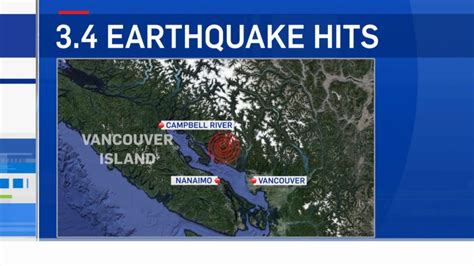5.1 Magnitude Earthquake Strikes Near Sunshine Coast, Tremors Felt in Vancouver: A Comprehensive Guide to Earthquake Preparedness
On [Date], a significant earthquake measuring 5.1 on the Richter scale struck near the Sunshine Coast of British Columbia, Canada. The quake, which occurred at [Time] [Time Zone], sent tremors throughout the region, with noticeable shaking felt as far away as Vancouver. This event serves as a stark reminder of the importance of earthquake preparedness. While this particular earthquake caused minimal damage, it highlights the potential for more significant seismic activity in the future.
Understanding the Earthquake's Impact
The 5.1 magnitude earthquake, centered approximately [Distance] from the Sunshine Coast, was felt widely across the region. While no major structural damage was reported in Vancouver, many residents experienced shaking and a sense of unease. Social media was abuzz with reports of swaying buildings, rattling windows, and the characteristic rumbling sound associated with earthquakes. The depth of the earthquake also played a significant role in how strongly it was felt; shallower earthquakes tend to cause more intense shaking at the surface.
Earthquake Preparedness: A Crucial Step
The experience underscored the crucial need for earthquake preparedness. While we can't predict when earthquakes will strike, we can certainly prepare for their potential impact. Here's a comprehensive guide to help you and your loved ones stay safe:
1. Create an Emergency Plan:
- Develop a Family Communication Plan: Establish a designated out-of-area contact person to ensure family members can connect after an earthquake.
- Assemble an Emergency Kit: Include essential supplies like water (one gallon per person per day for at least three days), non-perishable food, a first-aid kit, a flashlight, extra batteries, a whistle, a dust mask, moist towelettes, garbage bags, and plastic ties for waste disposal.
- Secure Your Home: Identify potential hazards within your home and take steps to secure them. This includes securing heavy objects on shelves, reinforcing weak points in your structure (if possible), and knowing how to safely shut off gas and electricity.
- Practice Drop, Cover, and Hold On: Regular drills help familiarize yourself and your family with the proper safety procedures during an earthquake.
2. Learn about Earthquake Safety:
- Understand Your Local Risks: Research the potential earthquake hazards in your specific area. The geological characteristics of your region will influence the type of earthquake preparedness measures you should take.
- Know the Warning Signs: While precise earthquake prediction is impossible, learn to recognize the signs of an impending earthquake, such as unusual animal behavior or subtle changes in the ground.
- Stay Informed: Subscribe to emergency alerts and notifications from your local authorities.
3. Post-Earthquake Actions:
- Check for Injuries: Administer first aid to any injured individuals.
- Evacuate if Necessary: If you suspect structural damage to your home, evacuate immediately to a safe location.
- Avoid Damaged Areas: Stay away from areas that may have suffered significant structural damage.
- Stay Updated: Continue to monitor emergency broadcasts for information about aftershocks and recovery efforts.
Conclusion:
The earthquake near the Sunshine Coast serves as a powerful reminder of the importance of being prepared. Taking proactive steps to ensure your safety and the safety of your loved ones is vital. By following these earthquake preparedness guidelines, you can significantly reduce your risk and increase your ability to cope with the challenges of a seismic event. Remember, preparation is key to surviving and thriving through unforeseen circumstances. Stay safe!
Keywords: earthquake, Sunshine Coast, Vancouver, earthquake preparedness, emergency plan, safety tips, earthquake safety, 5.1 magnitude earthquake, British Columbia, disaster preparedness, natural disaster, seismic activity, Richter scale, drop cover hold on.
